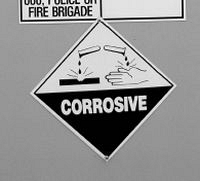

A Suffolk textile company has been sentenced for serious safety failings, after a worker suffered three years of ill-health following his exposure to chemicals.
The worker was employed at Gainsborough Silk Weaving Company Ltd in Sudbury as the dye house manager from 1993 to his dismissal in 2012. The 57 year old had been suffering from chronic breathing difficulties since 2008 and had been hospitalised on two occasions as a result. He was taking a large quantity of drugs to suppress his symptoms, which improved markedly after he left the company and stopped working with the chemicals.
His ill-health was reported to the Health and Safety Executive (HSE), who have now prosecuted the company for a series of safety offences. They found that the company had failed to assess the risks arising from working with hazardous reactive dyes, despite the risks of respiratory damage being well known in the industry. They also failed to provide their staff with adequate training or equipment to safeguard their health when working with the substances.
In addition, a health surveillance programme for the firm's workforce was stopped in 2004, which if it had been operating, could have helped prevent the employee's long period of ill-health. The company also failed to provide health surveillance for exposure to noise, ignoring the legal requirement to do so where employees are likely to suffer noise induced hearing loss.
Gainsborough Silk Weaving Company Ltd was fined £20,000 and ordered to pay £10,000 costs over three years, after pleading guilty to breaching the Control of Substances Hazardous to Health (COSHH) Regulations SI 2002/2677 and the Control of Noise at Work Regulations SI 2005/1643.
Following the hearing, HSE Inspector Martin Kneebone said, "Gainsborough Silk Weaving Company Ltd fell well short of their responsibilities over a protracted time period. They neglected to assess the very real health risks involved and take the measures necessary to minimise those risks. They should have installed suitable ventilation equipment for weighing and mixing the dyes. They should also have provided proper information, instruction, training and health surveillance for their employees. The lack of these left workers at a significant risk of contracting respiratory illnesses by their exposure to these chemicals."
He continued, "In addition, the company's failure to provide health surveillance as regards exposure to high noise levels at work has meant that some employees, previously identified as vulnerable, may have suffered further deterioration in their hearing due to continued exposure. Again the risk of employees suffering noise induced hearing loss from working in the weaving industry is well known and preventable."
For more information, see: